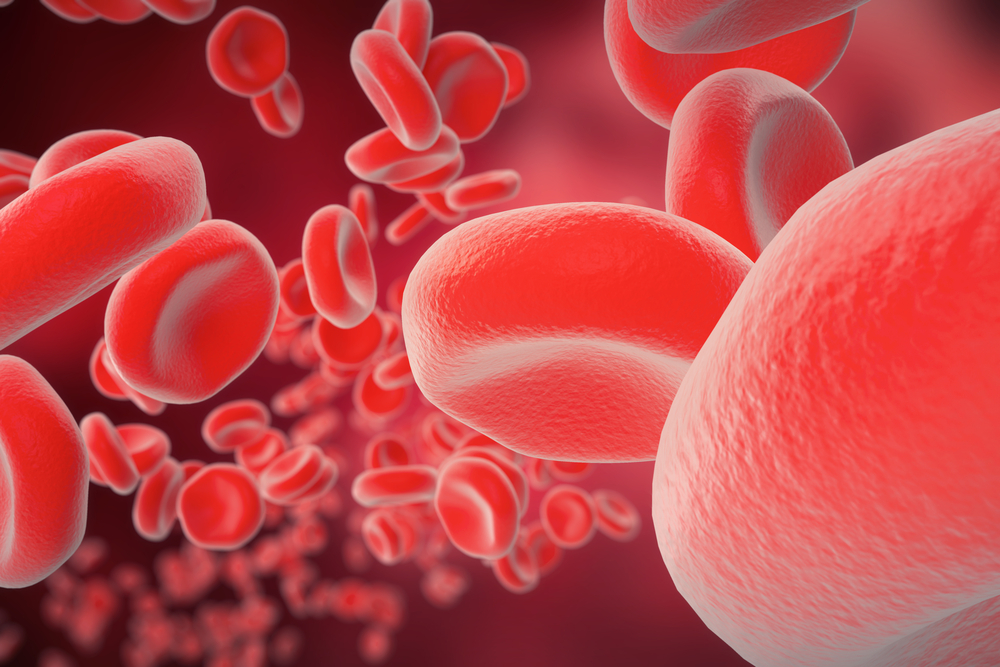NHLBI Stepping Up Efforts to Apprise SCD Patients of Therapies and Trials

Wide interest in a CBS 60 Minutes story about a Florida woman with sickle cell disease (SCD) whose symptoms were eased through gene therapy has prompted the National Heart, Lung, and Blood Institute (NHLBI) to raise awareness of other work the National Institutes of Health (NIH) is doing in this disease.
In the March TV segment, Jannelle Stephenson shared her experience of recovery after receiving genetic treatment as part of an ongoing NIH Phase 1/2 clinical trial (NCT02140554). That study is evaluating the safety and efficacy of the investigational gene therapy LentiGlobin in severe sickle cell anemia.
Developed by Bluebird bio, the therapy is designed to raise patients’ long-term hemoglobin levels. Hemoglobin is the molecule that transports oxygen in red blood cells. Researchers extracted stem cells — which have the ability to develop into many different cell types in the body — from people with severe sickle cell anemia and injected them with LentiGlobin BB305 viral vector. That carries the modified human beta-A-T87Q globin gene. The treated cells were then delivered back into the patients — where they started to produce the hemoglobin (HbAT87Q).
Preliminary findings suggest that the approach has an acceptable level of safety, and indicate that participating patients had fewer vaso-occlusive crises, which often cause acute pain.
To date, 11 people have undergone the gene therapy so far, and three more are preparing to participate. The hope is the therapy will enable patients’ bone marrow to consistently produce normal red blood cells. The trial continues to recruit participants, although open slots are dwindling. Those interested may call 1-800-411-1222, or e-mail at [email protected]. Go here for eligibility requirements.
“I am feeling amazing after the treatment; but it has been a year of adjustment for sure,” Stephenson, 28, said in a press release. “I have been testing my body’s new limits, and really exploring my level of physical fitness.”
“With gene editing, we can cut DNA wherever we tell it to cut to deactivate fetal hemoglobin,” John Tisdale, MD, chief of the NHLBI’s Cellular and Molecular Therapeutics branch, said in a separate press release. “If we can switch people with sickle cell disease back to the correctly spelled fetal form of hemoglobin, then we can also cure the disease.”
Stephenson’s story sparked scores of inquiries to the NHLBI from healthcare providers, caregivers, and patients affected by the disease.
“Patients are becoming more aware of the programs, so it’s really phenomenal to see,” said Jim Nichols, a lead consultant with the NHLBI’s Sickle Cell Branch.
The NIH points out that it has numerous other efforts afoot for the 100,000 U.S. residents — and 20 million patients globally — who live with the painful genetic disorder.
One therapy under development for more than a decade tests ways to make bone marrow transplants from matching siblings more accessible, and less toxic, to people with SCD. A similar kind of treatment is testing (NCT03077542) the effectiveness of a transplant using the bone marrow of a half-matched family donor, such as a parent or child.
One NHLBI team will soon begin enrollment for a clinical trial (NCT04000165) to determine if a drug under study to treat a rare genetic disease called pyruvate kinase deficiency could also be used to treat sickle cell pain. The investigational oral therapy, called AG-348 (Agios), is designed to increase pyruvate activity. That would promote oxygen delivery in the red blood cells to occur more readily, blocking sudden, severe pain crises and improving patients’ quality of life.
People with sickle cell disease also may enroll in a natural history screening study (NCT00081523) with NIH. While it is not a treatment program in itself, the study permits investigators to pair participants with any available therapy or treatment for which they may qualify. Those who don’t fit a trial will still receive expert consultation.
Due to high interest in these projects, the NHLBI is working diligently to keep the SCD community apprised of everything that is going on.
“It’s been humbling to see the amazing transformation of the program,” said Wynona Coles, a certified clinical research professional in the NHLBI’s Cellular and Molecular Therapeutics branch. “I’m hoping the results remain positive so that interest will continue to grow and more people will benefit.”






